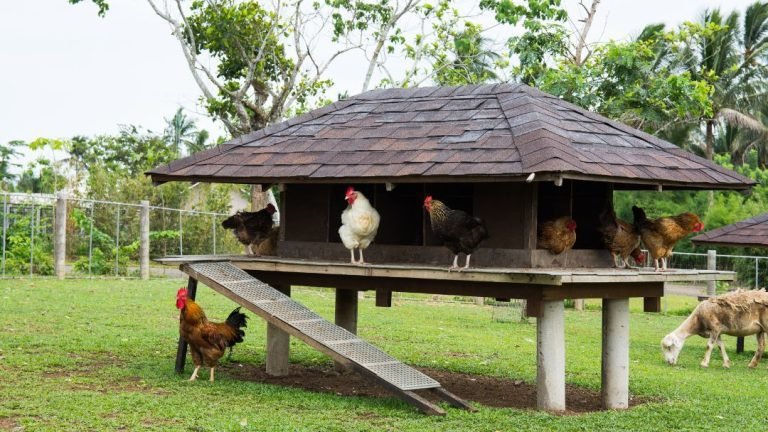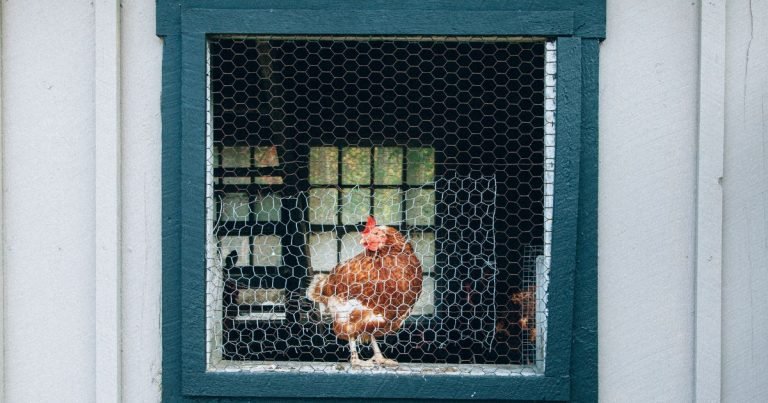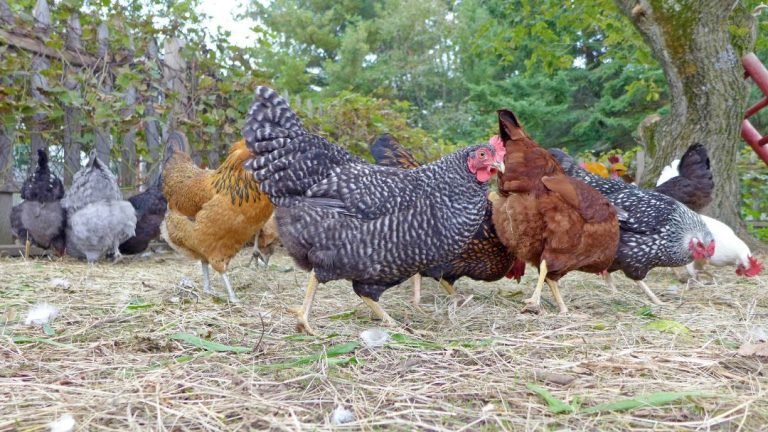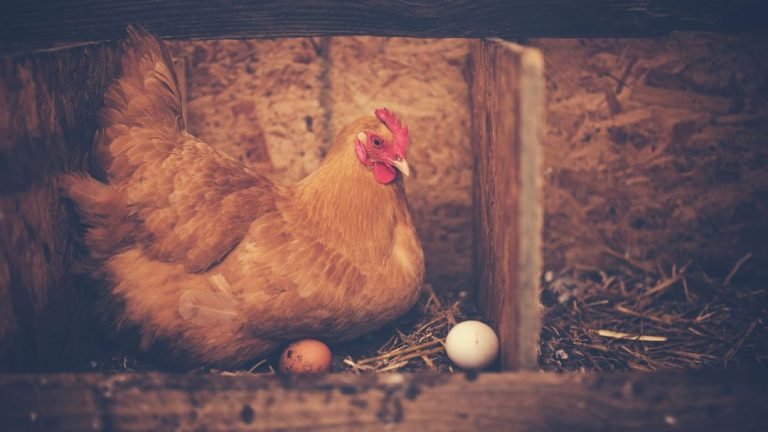Whether you have tiny chicks or adult chickens, maintaining the proper humidity level is crucial. It should not be too high or too low. An inappropriate humidity will prevent optimal growth, food appetite, feather quality, and other health issues.
So, what is the ideal humidity for a chicken coop? It can range from 50% to 70%, depending on the chicken’s age, breed type, and surrounding environment. But the humidity level needs to be a little higher, 60% to 80%, during the brooding session.
What Is The Ideal Humidity For Chicken Coop?
Maintaining the optimal humidity level inside the chicken coop means chickens feel comfortable.
An ideal humidity level will allow fresh air to enter the chicken coop and let them stay safe.
Since humidity levels drop during winter, keeping the chicken coop humidity level between 50% and 70% is a solid rule of thumb.
Also, make sure the temperature is between 65° and 75°F. This keeps flocks safe from unwanted stress.
During the summer season, the humidity level automatically increases. Hence, you can keep the humidity around 45% to 50%.
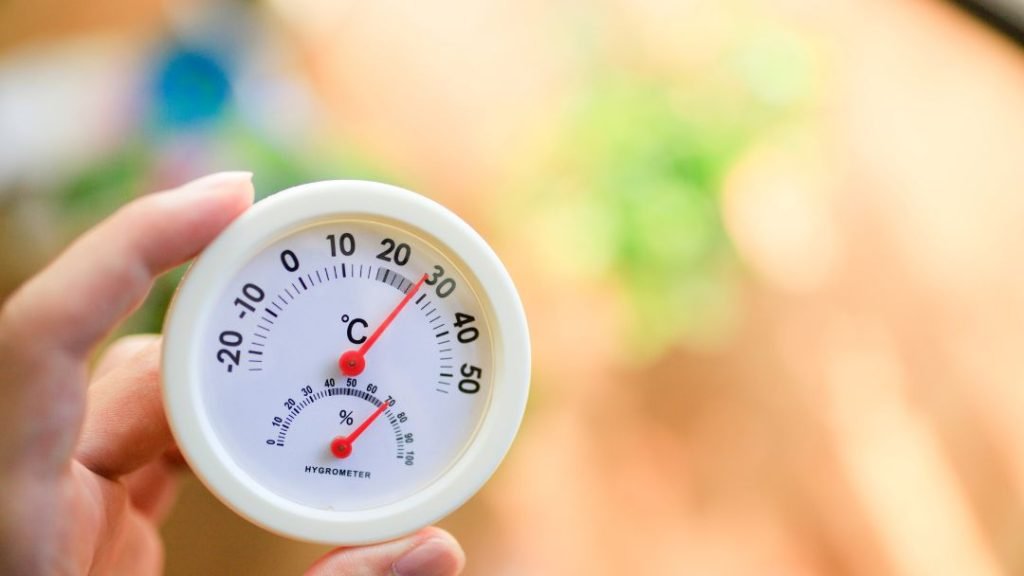
Do Chickens Need More Humidity During Brooding Period?
You can maintain a 50% to 70% humidity level during brooding.
But a little higher humidity is okay to add better starting conditions for the birds. It can be around 60% to 80% humidity level.
Chickens become a little bit warmer during the brooding session. Having relative humidity helps the flocks to cool themselves quickly.
It keeps them safe from ammonia. Otherwise, it would affect their respiratory tract and overall health.
What Is the Ideal Humidity for Day-old Chicks?
Day-old chicks can endure extreme humidity levels unless it becomes out of their control.
Most experts recommended maintaining around 60% of the relative humidity level.
If the relative humidity drops less than 40% or reaches more than 85%, they start feeling uncomfortable gradually.
The extremely low humidity level will make the chicks’ eyes close or their eyes start blinking. In some cases, you may see swallowing issues too.
What Happens If The Humidity Is Too Low For Chicken Coop?
Reduced humidity level creates a dry environment. Too dry conditions will cause dusty issues.
You will fail to maintain a cleaner environment. Plus, the chicken coop will become dirty quickly if the doors and vents are kept open.
A severe dust environment will cause inflammation problems. Their Respiratory system will not stay healthy.
In some cases, their airways might be damaged from severe Inflammation.
Flocks are more likely to receive attacks by various bacteria and viruses.
What Happens If The Humidity Is Too High For Chicken Coop?
An extreme humidity level will create an intense moist environment.
It also affects the surrounding air quality. Pathogenic microorganisms are more likely to thrive under this condition.
Also, too much humidity causes frostbite. It will make them sick within a short period.
Their egg production and fertility will dramatically reduce. It will also affect their comb, wattle, and feet.
What Is The Ideal Humidity For Chicken Coop With A Heater?
If the chicken coop doesn’t have a heater, ensure the humidity level is not more than 10% of the outside environment.
For example, if the outdoor humidity level is 50%, keep the flock house humidity level within 60%.
However, the humidity level can be slightly higher if the chicken coop has a heater.
When the internal temperature is more than 10 degree Celsius or 50 degrees Fahrenheit, the maximum humidity level can be 80%.
If the internal temperature is between 0 to 10 degree Celsius or 32 to 50 degrees Fahrenheit, the maximum humidity level can be 90%.
However, the humidity level can be more or less during extreme weather conditions.
Bonus Tips to Control Humidity in Chicken Coops
Using effective techniques, you can control the humidity level inside the chicken coop.
Here we will tell you how to achieve a comfortable humidity level for your flocks.
01. Install Shed Vents
Humidity level increases from too much water vapor.
Keeping the water humidity level low needs requires ensuring enough ventilation.
Install shed vents on the roof area. Avoid keeping any openings, cracks, or crevices as they affect the internal humidity level.
02. Weatherproof Chicken Coop
Make sure the chicken coop is free from leakage. Otherwise, rain, snow, and cool air may enter the flock house.
Woods exposed to cold weather will fail to dry quickly. Generally, weatherproof timber or pine woods are better for weatherproofing.
It makes the flock house more effective in controlling humidity if the roofing area is made of metal, plastic, or shingles.
This type of coop can handle extreme weather conditions. But if it is non-waterproof, the humidity level may increase or decrease following the outside situation.
03. Clean Chicken Poop Everyday
Do you know your flock’s manure has a good amount of moisture content? It can affect the surrounding humidity level.
Chickens’ poops have composite microbial agents that increase the air humidity level.
Regularly cleaning the chicken coop will prevent the humidity level from rising.
More importantly, it allows you to maintain a hygienic environment to help your flocks stay happy.
04. A Balanced Deep Litter Method
Remember, chicken droppings have 85% water.
When you follow a deep litter method, don’t forget to add an adequate amount of wood shavings or other dry bedding materials.
Maintaining a balance between flock manure and wood bedding materials is crucial.
If your chickens do pooping more frequently in larger volumes, add more bedding material.
05. Use Better Quality Bedding Material
Not all bedding materials can absorb moisture in the same quantity.
A lot of options are bedding materials available.
Choosing a particular option requires you to consider how much moisture you want to retain
If you want a fully dry condition, and is the best choice. Straw should be the least alternative option because it retains the maximum moisture.
The following tables give you a fair idea of how much moisture each bedding material retains after 48 hours.
| Bedding Material | Moisture Retention after 48 hours |
|---|---|
| Sand | 22.2% Moisture |
| Pine Shavings | 71.8% Moisture |
| Straw | 80.8% Moisture |
06. Bedding Thickness Level
How thick should flock bedding be? It depends on the temperature.
Chicken bedding can be around 3 to 5 inches thick during summer. They don’t need too much insulation.
But flocks need at least 6 inches of thick bedding during winter.
It can be even more than 12 inches to offer ample insulation during freezing weather.
07. Say NO to Snow Develop
Avoid building any snow for a longer session. When the snow starts melting, it will contribute to additional water.
Extra water means extra moisture. Additional moisture increases the humidity level.
If any snow develops around the chicken coop, scoop them away immediately.
08. Apply Low-VOC or Zero-VOC Latex Paint
Use low-VOC or zero-VOC latex paint on the chicken coop’s inner walls and nesting boxes.
This type of paint makes the wood surface waterproof by sealing the upper surface.
As a result, the walls and nesting boxers will not absorb unwanted moisture. This will help you maintain an optimal humidity level.
Final Thoughts
Is it not essential to keep your flocks safe from extreme moisture or too dry conditions? Keeping the birds happy is crucial if you want to achieve more egg and meat production.
Maintaining a balanced humidity level during the summer and winter seasons is crucial. But remember, not all chickens don’t need the same level of humidity.
We have already discussed what is the ideal humidity for a chicken coop. Aim at maintaining the level based on the weather conditions.


